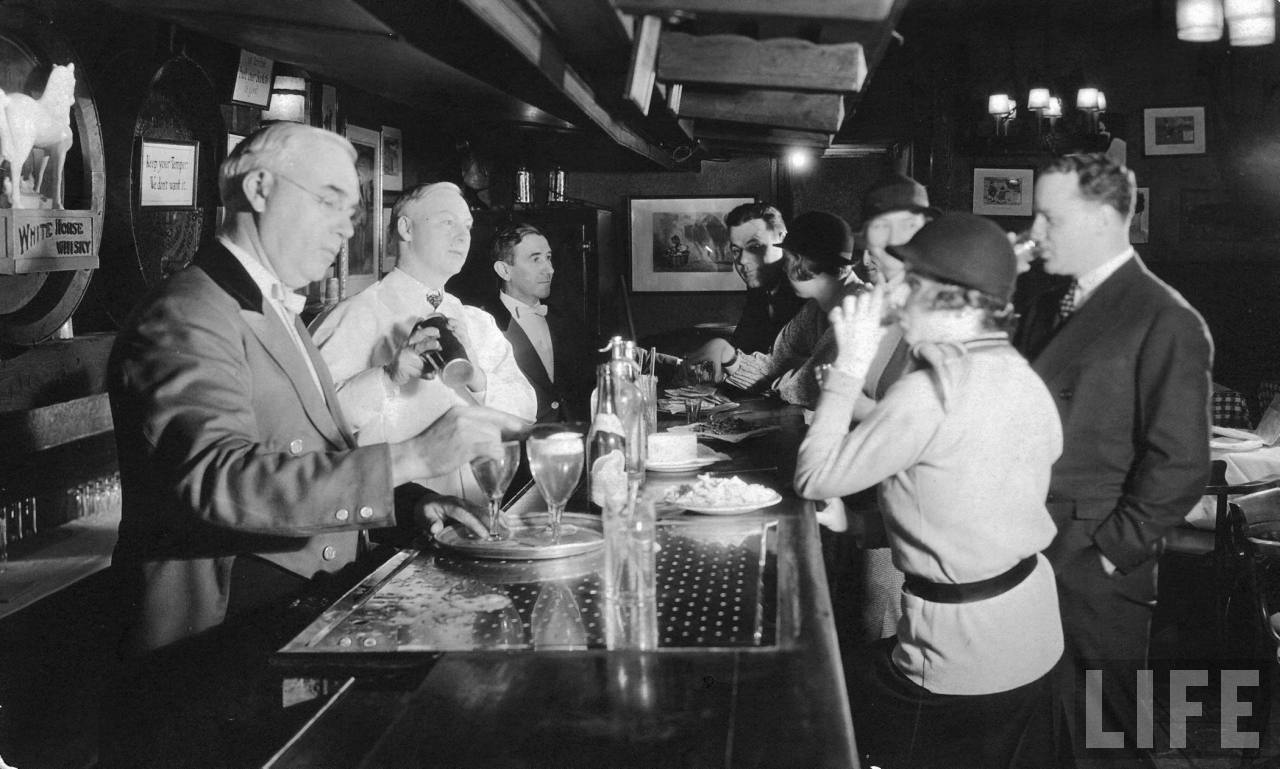By Gene Wisniewski
602007097
Jazz music rose further than ever
before during the prohibition era. In a time where booze was an even hotter commodity
from its recent outlawing, underground saloons named “Speakeasies” rose
at an astonishing rate. These “Speakeasies” became so popular that “…at one
point in New York city alone, Manhattan had over 5000 speakeasies” (Ward and
Burns). Amongst all this competition
there had to be ways besides just serving liquor and beer to attract customers.
This meant more jobs for musicians; Jazz musicians in particular.
The problem with prohibition was
just simply the fact that most Americans did not want to stop drinking. If
anything Americans wanted to drink more because alcohol almost became somewhat
of a novelty with the idea of some sort of rebellion against the higher
authority behind every sip of “firewater”. Mobs of the prohibition saw an opportunity
of business in the bootlegging of liquor and the hay day of speak easies was
born. Because of this, these millions of people who were looking for a buzz and
a good time flocked to these speakeasies. Mobs were supplying liquor to the
clubs at such a large quantity that it was almost as if it were never outlawed.
People just never would quit drinking and America’s most notorious out law, Al
Capone, was quoted saying “Let the worthy people of Chicago get their liquor
the best way they can” (Capone). And the best way they could was through these
speakeasies.
Mob influence didn’t stop at just the
supply of alcohol though. Obviously each establishment served the same
commodity (a club or bar setting where people loosened up and the booze flowed
as freely as tap water), but what set each establishment apart from the rest
was what band was playing at each joint. Gangsters such as Capone influenced the
growth of jazz just because of the fact they supplied liquor to these illegal saloons
where jazz was played since it was the “…music of his time and place…” which in turn caused Jazz musicians to
gravitate “…to Chicago where they delighted audiences…” (Bergreen). With this,
jazz rose to become one of the most popular forms of music in America.
Prohibition had done exactly the opposite
of what it had intended to do. It intended to increase morals among Americans
but instead people started coming out of their “shells” to the speakeasies. The
men came to drink and the music meant dancing and where there was dancing there
were women. Because of the popularity of speakeasies, prohibition gave birth to
some of the most famous jazz musicians such as
Louis Armstrong,
Duke Ellington,
Bojangles Robinson, and
Ethel Waters.
The women that showed up to listen
and dance to jazz showed up in a manner never before seen in America with their
bobbed hair, ruby red lipstick and short dresses. This “lack of morals” that
had newly appeared in women was blamed on the speakeasies and the jazz music
they provided.
As a result this became somewhat
rebellious on its own and of course a higher growth in appeal followed. With this
it was soon realized that Jazz was becoming a commercial commodity. Jazz had
become “…a dance craze, a form of light entertainment…” (Scaruffi). Jazz had gone so far as to become a career for
those musicians who attempted to profit from “serious” music but had failed.
From this this transition Swing music was born. With the birth of Swing, Jazz
was not just an art anymore but had actually become an industry. With this new
form of jazz, came a taste of disdain from more serious musicians who wanted to
move away from it. To them Swing music made Jazz no longer an art but only a
means for profit and it was something they wanted no part of. The public, on
the other hand, loved swing music. Even after prohibition when there were no
longer any speak easies, people still flocked to establishments that played
swing so they could dance. Swing was viewed as a demoralizing music so it had
the same appeal to the youth at the time that rock music had to youth in the
fifties.
Swing had become an unstoppable force in music whether the
most professional artists liked it or not and it didn’t stop until its
popularity eventually died down in the fifties. Prohibition was one of the most
unsuccessful attempts at lawmaking in US history but with it was birthed one of
the most successful genres of music to ever have originated here. With
Prohibition it spread the wonderful sound of Jazz to a more mainstream level
where it was no longer class limited but instead had seeped its way into all
social classes. It did at least to those part of each social class who were willing
to slip away from” Johnny Law” into an underground establishment to steal a few
sips of that forbidden feel good. If it weren’t for prohibition and the gangs
that fed booze to the speakeasies, Jazz greats such as the aforementioned may
have never risen to fame and never have gotten to share their contribution to
society with the masses. Critics can say what they may about the commercialization
of Jazz Swing music that was born during Prohibition, but it is arguably one of
the most important eras of not only pop music, but music as a whole.
Works Cited
Bergreen, L. Capone,
the man and the era. 1st Touchstone ed. Simon and Schuster, 1996. Print.
Capone, Deirdre
Marie. Uncle Al Capone - The Untold Story from Inside His Family. 1st.
Recaplodge LLC, 2010. Print.
Scaruffi, P. (2005).
A History of Jazz Music. TM.
Ward, Geoffrey C., and Ken Burns. Jazz, A History Of
America's Music. Knopf, 2002. Print.




